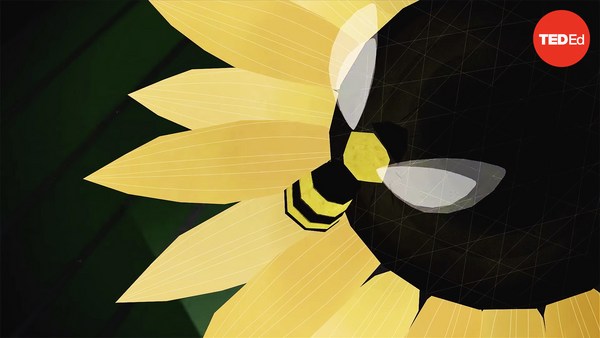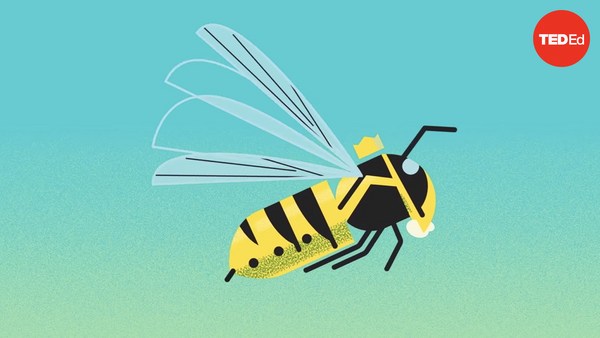This is Mabel. Mabel is an aphid, a small insect in the same order as cicadas, stink bugs, and bed bugs.
All these bugs pierce their prey and suck out vital fluids. Aphids’ prey are plants. And what aphids are after is buried within the plant, flowing in tubes made from single cells strung end-to-end. These are called sieve tubes and together they form the plumbing system for a plant’s most valuable resource: sap.
Sap is mostly water and sugar. Some species’ sap has as much sugar per liter as a can of soda. Photosynthesis is constantly producing sugar. You can think of it as a chemical “pump” which generates incredibly high pressure— up to 9 times that of a car tire— in the sieve tubes.
To feed, Mabel uses her stylet, which is a long, flexible needle. She slowly worms it into the tissue, between the plant’s cells, until she pierces one of those sieve tubes. Because the sap is under so much pressure, Mabel doesn’t even have to suck it out of the plant. She just opens a valve in her head and lets the pressure push the sap through her digestive system. We’ll come back to what comes out of her butt, but for now, you should know that plants don’t want to be punctured and sipped. So they try to defend themselves.
One defense is the sap itself. To see how that works, let’s hypothetically hook up some other insect’s digestive tract to a steady stream of sap. When that sap touches the insect’s cells, its high sugar content encourages the water in the cells to come out by osmosis… exactly like salt encourages water to come out of a slug. The more sap that passes through the insect, the more water it loses. Eventually, it shrivels up and dies.
Mabel’s gut, however, is packed with an enzyme called sucrase, which takes two molecules of sucrose and converts them into one molecule of fructose and one of… this three-unit sugar. Mabel burns the fructose for energy, leaving the three-unit-sugar behind.
Now, how does that help her?
The more molecules of sugar that are dissolved in the sap, the more water it can suck out of Mabel’s cells. By reducing the number of molecules of sugar in the sap, Mabel reduces its ability to suck water out of her cells. Plant sap neutralized.
Now that means Mabel can feed for days, getting all the energy she needs to reproduce.
Some aphid species have an incredible life cycle. For example, the green peach aphid. During the fall, males and females mate, and the females lay eggs. But in the spring, when the eggs hatch, all the nymphs that emerge are female. When those females reach maturity, they don’t lay eggs. Instead, they give birth to live young… that are clones of themselves… and already pregnant… with their own clones. So, these female aphids have two generations of baby aphid clones forming inside themselves at the same time. Scientists call this telescopic development.
That means that aphids can make more of themselves fast— there can be 20 generations within a single season— and that means lots of aphid poop. Mabel can poop her entire body weight every two hours, making her one of the most prolific poopers on the planet. Some aphid populations can produce hundreds of kilograms of poop per acre.
Now, aphid poop is not like your poop. Chemically, it’s not all that different from sap; it’s a clear and colorless sweet, syrupy liquid. You might already know it by a different name: honeydew.
Other species love honeydew. Some species of ants love it so much they sort of herd and defend entire aphid colonies. In return, the ants get a steady supply of sweet honeydew, which they can drink directly from the aphids’ butts.
Bottom’s up!
Humans love honeydew, too. Several Native American tribes used to harvest it from tall reeds and make it into cake. And some species of bee make honey from honeydew, which humans then harvest and eat.
So plants make the sap, which is eaten and pooped out by aphids, regurgitated by bees, harvested by humans, and dolloped into a cup of Earl Grey tea.


